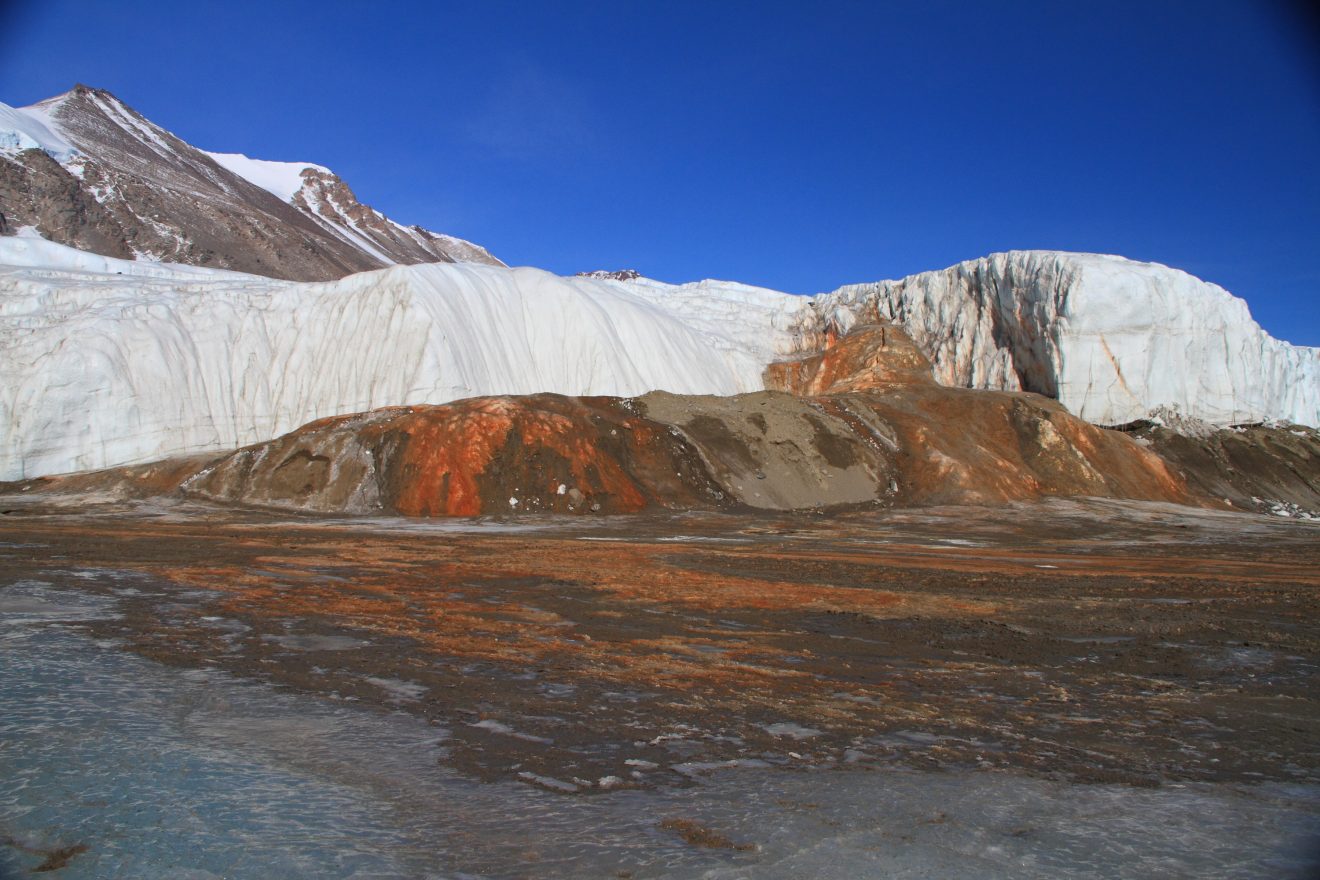 Blood Falls is a famous iron-rich outflow of water that scientists suspected was connected to a water source that may have been trapped under Taylor Glacier, an outlet glacier of the East Antarctic Ice Sheet, for more than a million years.
Blood Falls is a famous iron-rich outflow of water that scientists suspected was connected to a water source that may have been trapped under Taylor Glacier, an outlet glacier of the East Antarctic Ice Sheet, for more than a million years.
Geoscientist Thomas Griffith Taylor discovered Blood Falls in 1911, and it is famous for its sporadic releases of iron-rich salty water (brine). The brine turns red when the iron contacts air.
A research team led by the University of Alaska Fairbanks and Colorado College have used radio echo sounding to link Blood Falls to a large source of brine injected into the ice through through a network of subglacial crevasses.
The team’s study, published in the Journal of Glaciology, describes the brine’s 300-foot path from beneath Taylor Glacier to the waterfall.
An interview about the research with Erin Pettit can be see here.
Jessica A. Badgeley, Erin C. Pettit, Christina G. Carr, Slawek Tulaczyk, Jill A. Mikucki and W. Berry Lyons, “An Englacial Hydrologic System of Brine Within a Cold Glacier: Blood Falls, McMurdo Dry Valleys, Antarctica,” Journal of Glaciology, April 24, 2017.
DOI: 10.1017/jog.2017.16
